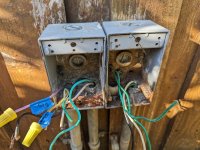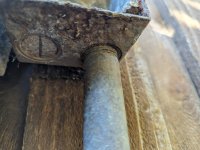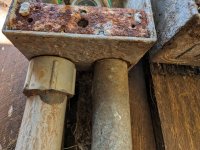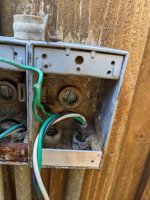Hi all -
I'm replacing one of my niche lights and as I'm doing that am going ahead and replacing the junction boxes which have rusted out. Here are pics of my situation. The left-most conduit (PVC) runs back to the pool equipment. The middle conduit (copper?) is the pool light, and the right-most conduit (copper?) is the spa light.
What has me puzzled is looking from below (pic) all conduit appear to be threaded into the junction boxes. How exactly does one undo these things, then install the new boxes in? Do I have to cut the conduit, then repair with couplers/repair sleeves (copper)?
Thanks!



I'm replacing one of my niche lights and as I'm doing that am going ahead and replacing the junction boxes which have rusted out. Here are pics of my situation. The left-most conduit (PVC) runs back to the pool equipment. The middle conduit (copper?) is the pool light, and the right-most conduit (copper?) is the spa light.
What has me puzzled is looking from below (pic) all conduit appear to be threaded into the junction boxes. How exactly does one undo these things, then install the new boxes in? Do I have to cut the conduit, then repair with couplers/repair sleeves (copper)?
Thanks!



Last edited:


